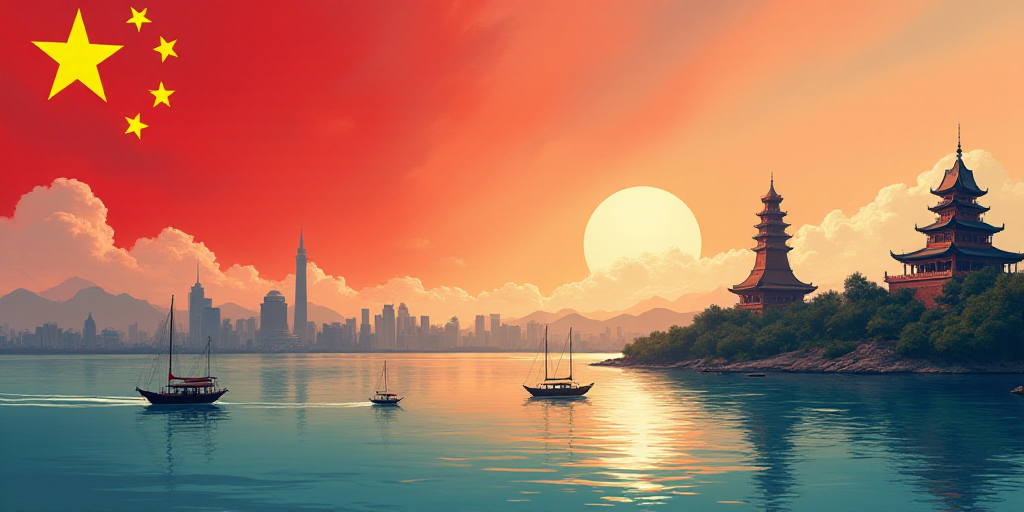Background on China’s Economic Performance
China, the world’s second-largest economy, has managed to avoid a sharp slowdown so far, partly due to a fragile truce in the trade war with the United States and political support. However, markets are preparing for a weaker second half as exports lose momentum, prices continue to fall, and consumer confidence remains low.
Key Figures and Achievements
According to official data released on Tuesday, China’s economy expanded by 5.2% in the second quarter of the year, aligning with forecasts due to robust export performance despite the ongoing trade conflict with the U.S.
The leaders of this global economic powerhouse are battling on multiple fronts to maintain growth, a challenge exacerbated by Donald Trump’s tariff offensive since his return to the White House in January.
Trump has imposed tariffs on China and most of its trading partners, threatening Chinese exports just as they have become crucial to stimulate economic activity.
Although a trade deal framework was achieved in negotiations last month in London, analysts warn of persistent uncertainty. Trump escalated matters on Monday by warning China’s trading partners, including China, that he will impose “very tough” tariffs reaching 100% if Russia does not end its war against Ukraine within 50 days.
Western countries have urged China to use its influence to persuade President Vladimir Putin to cease the Russian invasion initiated in February 2022.
Economic Performance Details
The official data released Tuesday showed that China’s economy grew 5.2% between April and June, in line with AFP survey forecasts. However, retail sales increased 4.8% year-on-year, falling short of the 5.3% expected in a Bloomberg survey among economists, indicating that efforts to revive domestic consumption have not gained traction.
Industrial production, on the other hand, advanced 6.8%, surpassing the 5.6% estimate.
Sheng Laiyun, deputy director of China’s National Bureau of Statistics (NBS), stated in a press conference, “The national economy has withstood pressure and consistently improved despite challenges. Production and demand have grown steadily, employment has remained stable overall, household incomes have continued to rise, new growth engines have developed solidly, and the development of high quality has taken further steps.”
“Much Effort”
Data from China’s General Administration of Customs published Monday showed that exports advanced more than expected in June, thanks to the trade truce between Washington and Beijing.
Imports also increased 1.1%, surpassing the 0.3% forecast, marking the first growth this year.
Wang Lingjun, a customs official, stated in a press conference Monday that Pekín hopes “the United States will continue to collaborate with China in the same direction,” according to state-run CCTV.
Wang acknowledged that the tariff truce “has been achieved with much effort.” However, many analysts predict slower growth in the coming six months due to persistently weak domestic demand as a major obstacle.
Economic Challenges and Future Outlook
Data published last week showed that consumer prices in China rose slightly in June, ending a four-month deflationary streak. However, the producer price index, which measures wholesale product values leaving factories, fell 3.6% year-on-year last month, prolonging a negative trend for several years.
Economists argue that China needs to shift towards a growth model driven more by domestic consumption rather than the traditional key drivers of infrastructure investment, manufacturing, and exports.
Key Questions and Answers
- Q: What was China’s economic growth rate in Q2 2023? A: China’s economy grew by 5.2% in the second quarter of 2023.
- Q: How have exports and imports performed amidst the trade war? A: Despite the trade tensions, China’s exports advanced more than expected in June, and imports increased 1.1%, marking the first growth this year.
- Q: What challenges does China face in maintaining economic growth? A: Analysts predict slower growth in the coming six months due to persistently weak domestic demand, and there is a need for China to transition towards a growth model driven by domestic consumption.
- Q: What is the current state of consumer prices and producer price index in China? A: Consumer prices rose slightly in June, ending a deflationary streak. However, the producer price index has been falling for years, indicating weakness in manufacturing activities.






